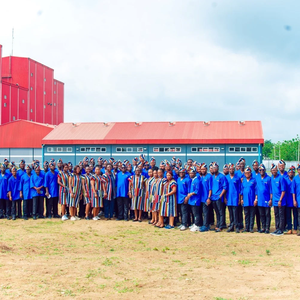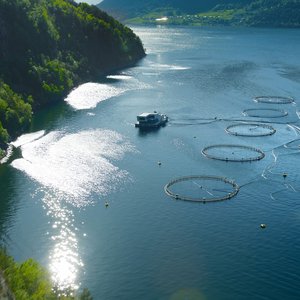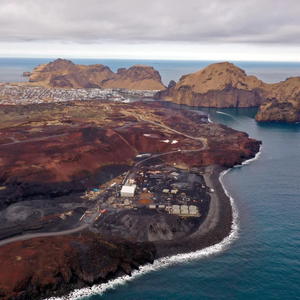Hexachlorobenzene (HCB) was first used as a pesticide in 1945, and was banned in the EU in 1981. HCB is volatile, lipophilic and bioaccumulates in the food chain. The human exposure through food is low, but HCB is found in fatty foods such a dairy products, meat and fatty fish.
HCB is readily absorbed in humans, however the acute toxicity is low. Animal studies have shown that HCB causes cancer in a wide range of organs, and affects the immune system. HCB is classified as a possible human carcinogen.
HCB in fish feed and fish meal
Fish feed contains in average 1.6 to 2.3 µg HCB/kg. The mean concentrations are below the current EU upper level of 10 µg HCB/kg feed. Also, the highest measured concentrations (9.3 µg/kg in 2012 and 7.2 µg/kg in 2006) are below the upper level. This data set is from the official monitoring program for fish feed, feed ingredients and premixes, which NIFES conduct on behalf of the Norwegian Food Safety Authority. In the years 2006 to 2012 20-25 samples were analysed annually.
In this monitoring programme there is limited data on the levels of HCB in feed ingredients, e.g. fish meal. Analyses from 2006 and 2007 show that the average concentration of HCB in fish meal is 1.4 µg/kg. In comparison, the current upper level is 10 µg/kg for HCB in fish meal.
HCB in salmon
In 2013 the average concentration of HCB in Norwegian farmed salmon was 1.0 µg/kg. Over the last 10 years, the mean concentrations for HCB is 1.3 µg/kg fillet, and the highest measured concentration was 4.8 µg/kg. In this period 546 samples (polled samples of five fish) were analysed for their content of HCB. Der is no upper level for HCB in salmon.
HCB in other foods
The European Food Safety Authority (EFSA) publishes annually a report on the residue levels of pesticides in food. The level of HCB in various foods is shown in the figure below; data for pork meat, egg and milk is obtained from EFSA (1) and data for farmed salmon from NIFES.
Data from EFSA (1) and NIFES (farmed salmon)
Human exposure through food
Despite its presence in the environment, data indicate a considerable decline of up to 90 % in human HCB exposure over the last twenty years. In Europe, human dietary HCB exposure ranges up to a few ng/kg body weight per day (2) which is far below the suggested tolerable daily intake (TDI) of 0.17 µg/kg body weight (3). The contribution of HCB from salmon to the TDI is low. If a person weighing 70 kg eats one meal of 300 gram of today’s salmon with an average concentration of 1.0 µg/kg, the exposure to HCB will be 2.4% of the TDI.
Carry-over from feed to salmon
Research at NIFES shows that HCB is transferred from feed to fillets of salmon (4). In a long term feeding trial with Atlantic salmon growing from 0.3 to 4 kg, estimated 35% of the HCB in the feed was transferred to the fillet. The feed contained 10 µg HCB/kg, corresponding to the current upper level, and the final concentration in the fillet was 2.9 ± 0.4 µg HCB/kg. If a person eats one meal (300 g) of this salmon the exposure would be 7.1% of the TDI.
References:
(1) EFSA (2013). Scientific report of EFSA. The 2010 European Union Report on Pesticide Residues in Food. EFSA Journal 2013:11(3):3130.
(2) EFSA (2006). Opinion of the Scientific Panel on contaminants in the food chain [CONTAM] related to Hexachlorobenzene as undesirable substance in animal feed. The EFSA Journal 2006: 402, 1 – 49.
(3) International Programme on Chemical Safety (1997). Hexachlorobenzene. Environmental Health Criteria 1997, World Health Organization, Geneva, Switzerland.
(4) Berntssen, M.H.G., Maage, A., Julshamn, K., Oeye, B.E & Lundebye, A.-K. (2011). Carry-over of dietary organochlorine pesticides, dioxins, PCBs, and brominated flame retardants to Atlantic salmon (Salmon salar L.) fillets. Chemosphere, 83, 95-103.







